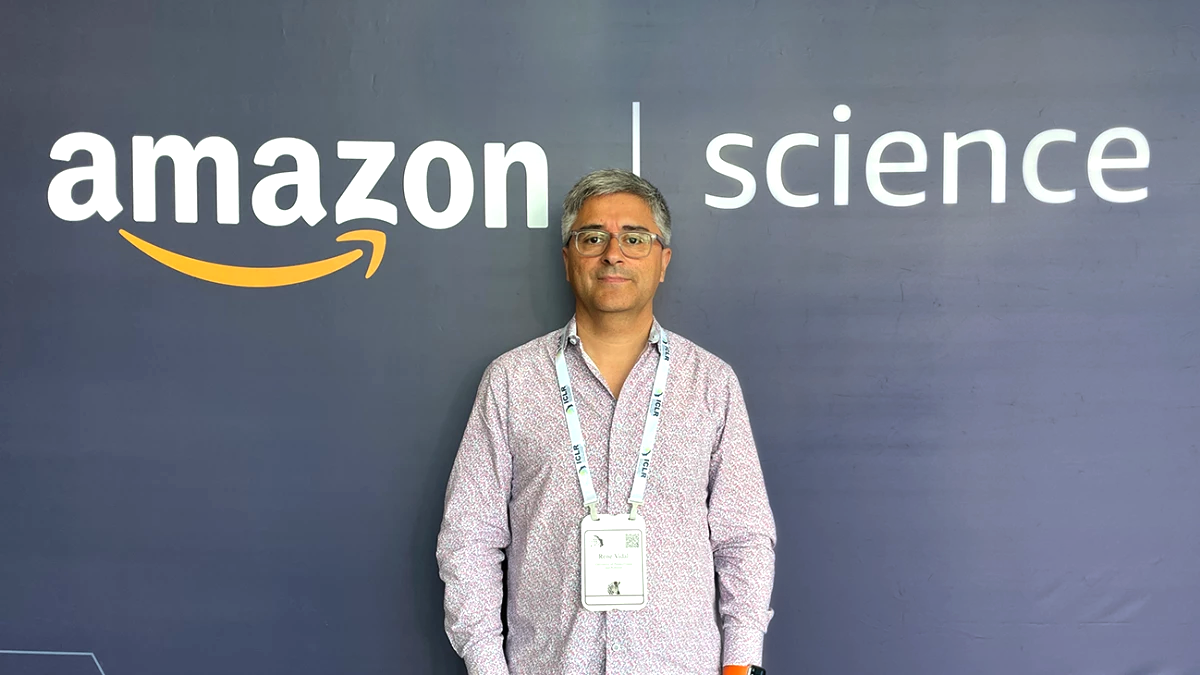At this year’s International Conference on Learning Representations (ICLR), René Vidal, a professor of radiology and electrical engineering at the University of Pennsylvania and an Amazon Scholar, was a senior area chair, overseeing a team of reviewers charged with evaluating paper submissions to the conference. And the paper topic that his team focused on, Vidal says, was the theory of deep learning.

“While representation learning and deep learning have been incredibly successful and have produced spectacular results for many application domains, deep networks remain black boxes,” Vidal explains. “How you design deep networks remains an art; there is a lot of trial and error on each and every dataset. So by and large, the area of mathematics of deep learning aims to have theorems, mathematical proofs, that guarantee the performance of deep networks.
“You can ask questions such as ‘Why is it the case that deep networks generalize from one data set to another?’ ‘Can you have a theorem that tells you the classification error on a new dataset versus the classification error on the training data set?’ ‘Can you derive a bound on that error as, say, a function of the number of training examples?’
“There are questions that pertain to optimization. These days, you are minimizing a loss function over, sometimes, billions of parameters. And because the optimization problems are so large, and you have so many training examples, for computational reasons, you are limited to very simple optimization methods. Can you prove convergence for these nonconvex problems? Can you understand what you converge to? Why is it the case that these very simple optimization methods are so successful for these very complex problems?’”
Double descent
In particular, Vidal says, two topics in the theory of deep learning have been drawing increased attention recently. The first is the so-called double-descent phenomenon. The conventional wisdom in AI used to hold that the size of a neural network had to be carefully tailored to both the problem it addressed and the amount of training data available. If the network was too small, it couldn’t learn complex patterns in the data; but if it got too large, it could simply memorize the correct answers for all the data in its training set — a particularly egregious case of overfitting — and it wouldn’t generalize to new inputs.
As a consequence, for a given problem and a given set of training data, as the size of a neural network grows, its error rate on the previously unseen data of the test set goes down. At some point, however, the error rate starts to go up again, as the network begins to overfit the data.
In the last few years, however, a number of papers have reported the surprising result that as the network continues to grow, the error rate goes back down again. This the double-descent phenomenon — and no one is sure why it happens.
“The error goes down as the size of the model grows, then back up as it overfits,” Vidal explains. “And it gets to a peak at the so-called interpolation limit, which is exactly when, during training, you can achieve zero error, because the network is big enough that it can memorize. But from then on, the testing error goes down again. There have been a lot of papers trying to explain why this happens.”
The neural tangent kernel
Another interesting recent trend in the theory of deep networks, Vidal says, involves new forms of analysis based on the neural tangent kernel.
“In the past — say, the year 2000 — the way we did learning was by using so-called kernel methods,” Vidal explains. “Kernel methods are based on taking your data and embedding it with a fixed embedding into a very-high-dimensional space, where everything looks linear. We can use classical linear learning techniques in that embedding space, but the embedding space was fixed.
“You can think of deep learning as learning that embedding — mapping the input data to some high-dimensional space. In fact, that’s exactly representation learning. The neural-tangent-kernel regime — a type of initialization, a type of neural network, a type of training — is a regime under which you can approximate the learning dynamics of a deep network using kernels. And therefore you can use classical techniques to understand why they generalize and why not.
“That regime is very unrealistic — networks with infinite width or initializations that don't change the weights too much during training. In this very contrived and specialized setting, things are easier and we can understand them better. The current trend is how we go away from these unrealistic assumptions and acknowledge that the problem is hard: you do want weights to change during training, because if they don't, you're not learning much.”
Indeed, Vidal has engaged this topic himself, in a paper accepted to this year’s Conference on Artificial Intelligence and Statistics (AISTATS), whose coauthors are his old research team from Johns Hopkins University.
“The three assumptions we are trying to get rid of are, one, can we get theorems for networks with finite width as opposed to infinite width?” Vidal says. “Number two is, can we get theorems for gradient-descent-like methods that have a finite step size? Because many earlier theorems assumed a really teeny tiny step size — like, infinitesimally small. And the third assumption we are relaxing is this assumption on the initialization, which becomes much more general.”
The limits of representation learning
When ICLR was founded, in 2013, it was a venue for researchers to explore alternatives to machine learning methods, such as kernel methods, that represented data in fixed, prespecified ways. Now, however, deep learning — which uses learned representations — has taken over the field of machine learning, and the difference between ICLR and the other major machine learning conferences has shrunk.
As someone who spent 20 years as a professor of biomedical engineering at Hopkins, however, Vidal has a keen awareness of the limitations of representation learning. For some applications, he says, domain knowledge is still essential.
“It happens in domains where data or labels may not be abundant,” he explains. “This is the case, for example, in the medical domain, where maybe there are 100 patients in a study, or maybe you can't put the data on a website where everyone can annotate it.
“Just to give you one concrete example, I had a project where we needed to produce a blood test, and we needed to classify white blood cells into different kinds. No one is ever going to take videos of millions of cells, and you're not going to have a pathologist annotate each and every cell to do object detection the way we do in computer vision.
“So all we could get were the actual results of the blood test: what are the concentrations? And you might have a million cells of class one, class two, and class three, and you just have these very weak labels. But the domain experts said, we can do cell purification by adding these chemicals here and there, and we do centrifugation and I don't know what, and then we get cells of only one type in this specimen. Therefore you can now pretend that you have labels, because we know that cells that had different labels didn't survive this chemistry. And we said, ‘Wow, that’s great!’
“If you do things with 100% people who are all data scientists and machine learning people, they tend to think that all you need is a bigger network and more data. But I think, as at Amazon, where you need to think backwards from the customer, you need to solve real problems, and the solution isn't always more data and more annotations.”





















